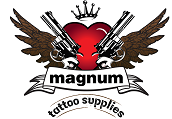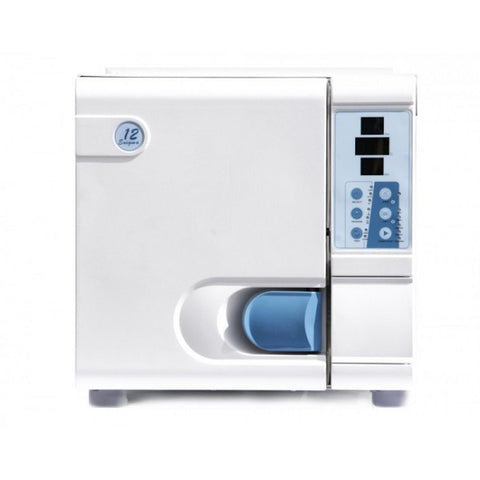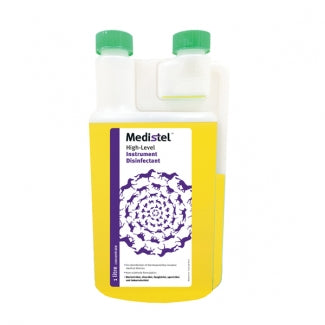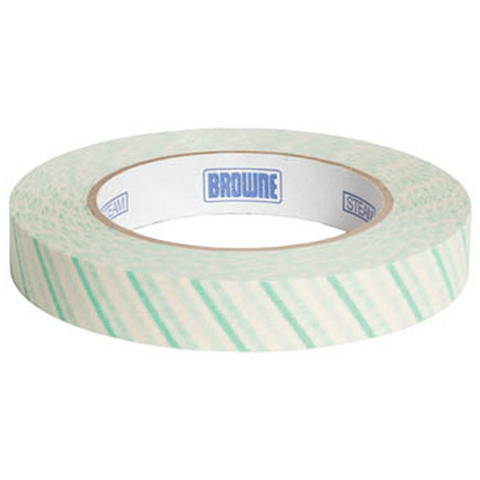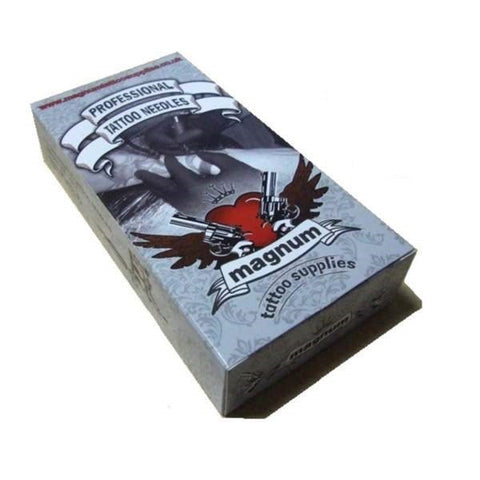Guide to tattoo waste disposal: Best practices for tattoo artists
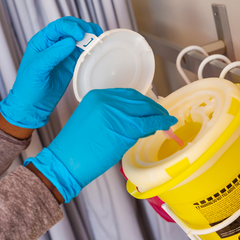
Disposing tattoo waste properly is a major challenge for artists and studio owners. Incorrect handling of materials like used needles, contaminated gloves, and excess ink can lead to health risks, legal issues, and environmental harm.
This guide offers straightforward best practices for tattoo waste disposal, helping tattoo professionals maintain a safe, compliant, and environmentally friendly workspace.

Types of waste typically generated in a tattoo studio
Tattoo studios generate various types of waste, which can be categorised as follows:
Infectious waste:
- Needles and sharps: Used needles, razor blades, and other tools that pierce the skin are considered biohazardous and must be disposed of in sharps containers.
- Contaminated waste: This includes any waste that comes into contact with bodily fluids or blood or such as gloves, bandages, and used ink caps.
General waste:
- Non-contaminated waste: Items such as paper towels, wipes, and other general waste that haven’t been contaminated with blood or bodily fluids.
- Packaging materials: Plastic wrappers, boxes, and other materials used to package tattoo supplies.
Chemical waste:
- Disinfectants and cleaners: These chemicals must be disposed of according to local regulations for sterilisation and cleaning due to their potential environmental impact.
- Ink waste: Excess tattoo ink and containers with residual ink.
Other specialised waste:
- Sterilisation waste: Autoclave bags or biological indicators used in the sterilisation process might be considered special waste depending on local regulations.
How to properly dispose tattoo waste
Proper management of waste in a tattoo studio involves several critical steps to ensure safety and compliance with health regulations:

Segregation
Your first step is to segregate waste into various categories at the point of generation. Infectious waste, such as used needles, gloves, and anything contaminated with blood or bodily fluids, should be separated from general waste like paper towels and packaging materials.
Sharp items like tattoo needles must be immediately placed in FDA-approved sharps disposal containers that are puncture-resistant, leak-proof, and labelled appropriately.
Handling and storage
Once the waste is segregated, you should handle it minimally to reduce the risk of exposure or accidents. Containers for infectious waste should be sealed and stored in a designated, secure area within the studio until disposal.
Similarly, chemical wastes, such as used disinfectants and inks, should be stored in containers compatible with their material to prevent leakage and chemical reactions.
Disposal
Infectious and sharp waste should be picked up by a certified medical waste disposal company that can handle and treat it according to state and federal regulations.
General waste can be disposed of as regular trash. Still, you should check if certain materials like plastics or cardboard can be recycled. Chemical wastes require specific disposal methods to prevent environmental contamination, often needing specialised waste management services.
Documentation and compliance
You must keep detailed records of how and when waste is disposed of, including manifests from waste pickup companies for infectious and hazardous wastes. Compliance with local, state, and federal regulations is crucial for the safety of those in the studio and to avoid legal issues and fines.
Training and awareness
Regular training for all studio staff on proper waste management practices is essential. This includes training on handling different types of waste, emergency procedures for spill management, and updates on regulatory changes.
Tattoo waste disposal awareness can significantly reduce the risk of accidents and ensure the studio operates safely and responsibly.
Tattoo waste disposal methods

Regular waste
This category includes non-hazardous materials such as paper towels (not used during tattoo procedures), broken non-electronic equipment, office waste, and general non-recyclable trash. These items are disposed of in general waste bins. They are treated like typical residential or office waste, ultimately heading to municipal landfills.
Dry mixed recycling
Recyclable materials such as plastic bottles, paper, cardboard, glass containers, and metal cans are included here. These items often come from packaging materials or supplies that are not contaminated by tattoo procedures. They are sorted into dry mixed recycling bins and sent to recycling facilities, where they are processed and converted into new products.
Food waste
Organic waste from food consumed by staff or clients falls into this category. This includes leftovers, food scraps, and biodegradable packaging in designated food waste bins. This waste is typically sent to composting facilities, where it decomposes naturally, helping to reduce methane emissions from landfills and contributing to soil enrichment.
Glass recycling
This includes glass items such as empty ink bottles (if thoroughly cleaned) and glass containers from cleaning supplies, which are recycled separately to avoid contamination with other materials. Glass is highly recyclable and is crushed, melted, and reformed into new glass products, reducing the need for raw materials and energy in glass production.
Sharps disposal
Used needles, razors, scalpel blades, and other sharp instruments that can cause cuts or punctures are considered sharps. They must be disposed of in puncture-proof sharps containers specifically designed for this purpose. These containers help prevent injuries and are handled by specialised medical waste disposal services that ensure these items are safely destroyed.
Clinical waste
This type of waste includes materials contaminated with blood or bodily fluids, such as used gloves, ink caps, and gauze. Clinical waste requires careful handling and is disposed of in specially designated clinical waste bins that are usually colour-coded and labelled. This waste is treated as hazardous and is typically incinerated to destroy any pathogens it may contain.
Confidential waste
Confidential waste consists of sensitive documents like client records, consent forms, and business documents that must be protected to maintain privacy and comply with data protection laws. This waste is usually shredded or rendered unreadable, and the remnants are handled securely to prevent potential data breaches.
Best practices for waste segregation
Labelling of different waste bins
- Clear labelling: Bins should be clearly labelled with the type of waste they are intended for. Labels should include text and universal symbols that are easily understandable to prevent the misplacement of waste.
- Colour coding: Implementing a colour-coded system for waste bins can visually aid segregation. For example, blue for paper, green for glass, red for sharps, and yellow for clinical waste.
- Placement of bins: Bins should be conveniently placed where the respective waste is most likely generated. This accessibility encourages proper waste disposal habits.
- Informational posters: Placing educational posters above or near waste bins can provide additional instructions and reinforce the segregation practices.
Segregation strategies for various waste types
- Regular waste (Non-Hazardous): You should establish bins for general waste, which is non-hazardous and does not include recyclable materials. Typically, this waste includes food packaging, non-recyclable plastics, and mixed materials that cannot be easily separated.
- Recyclables: You must set separate bins for paper, plastics, metals, and glass. It’s important to educate yourself and your staff on what can be recycled and ensure that these materials are clean and free from food or other contaminants before you place them in recycling bins.
- Organic and food waste: I advise designating bins specifically for organic waste, which can be turned into compost. This type of waste segregation is particularly crucial if you operate facilities with cafeteria services or generate significant amounts of food waste.
- Hazardous waste: You must segregate hazardous materials like chemicals, batteries, and electronic waste into specialised containers. These containers should be sturdy and leak-proof to prevent spillage and contamination.
- Sharps and clinical waste: You should use puncture-resistant containers for sharps, which should be labelled and distinctly colored (commonly yellow or red). You must manage clinical waste bins to ensure they are used only for their specific purpose.
- Confidential waste: You should have secure bins for confidential waste to protect sensitive information until it can be properly destroyed, typically through shredding.
Why is it important to dispose of tattoo waste properly?
Proper disposal of tattoo waste is essential for several key reasons. Firstly, it helps prevent the spread of infectious diseases, as used needles and other tools can carry harmful pathogens. Secondly, correct disposal methods protect anyone handling the waste from potential injuries, such as needle sticks.
Lastly, it prevents environmental contamination by ensuring hazardous materials are not improperly thrown away. This adherence to safety and environmental regulations is crucial for maintaining a safe, clean, and responsible tattoo parlour.
Tattoo waste regulations & laws in UK
In the UK, the disposal and management of tattoo waste is regulated under several key laws and regulations to make sure public health, safety, and environmental protection.
1. Control of Substances Hazardous to Health (COSHH) Regulations:
These regulations require tattoo studios to manage hazardous substances properly, including the safe handling, storage, and disposal of inks, chemicals, and biological waste that could harm health.
2. Environmental Protection Act 1990:
This act imposes a duty of care on businesses, including tattoo parlours, to ensure that all waste is disposed of properly to prevent pollution. It mandates that waste is handled, stored, and disposed of in ways that do not harm the environment.
3. Health and Safety at Work Act 1974:
Under this act, employers must ensure their employees' health, safety, and welfare. This includes managing risks associated with hazardous waste produced during tattooing, providing appropriate training, and using correct waste disposal methods.
4. The Environment Act 2021:
This recent legislation emphasises the importance of waste segregation. It introduces new requirements for businesses to separate different types of waste, such as recyclables and organics, to enhance sustainability and reduce environmental impact.
Tattoo studios must comply with these regulations to operate legally. Non-compliance can result in significant fines, legal actions, and potentially the revocation of operating licenses.
Tattoo artists and studio owners typically work with licensed waste disposal companies specialising in handling medical or hazardous waste to ensure all regulatory requirements are met.
Compliance with these regulations is crucial for environmental protection and maintaining the safety and health of staff and clients in tattoo establishments.
Final thoughts
Proper tattoo waste disposal is essential for tattoo artists to ensure safety, comply with regulations, and protect the environment. You can minimise health risks and environmental impact by using labelled containers, separating waste, and employing professional disposal services.
Staying informed and adhering to best practices in waste management will help maintain the reputation of the tattoo industry as responsible and safe.
- Mark Joshua Luz
